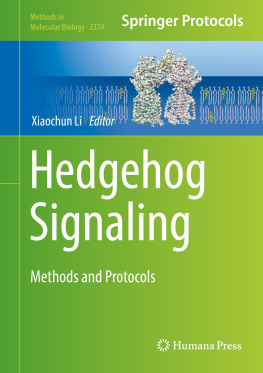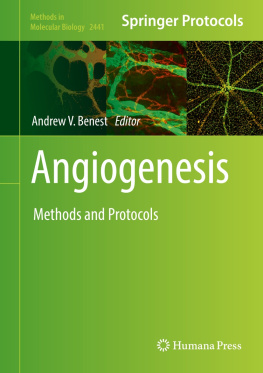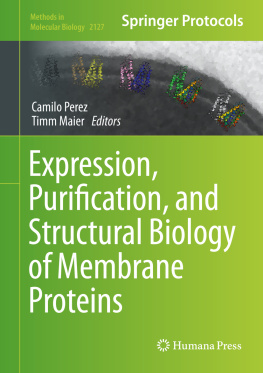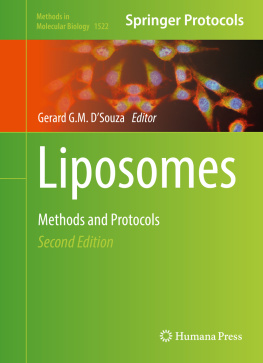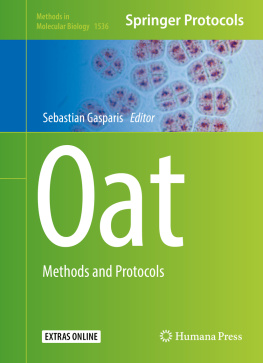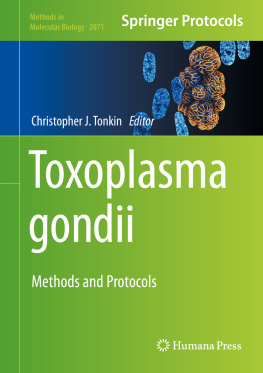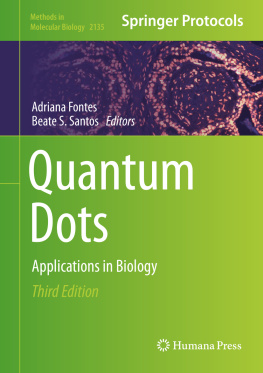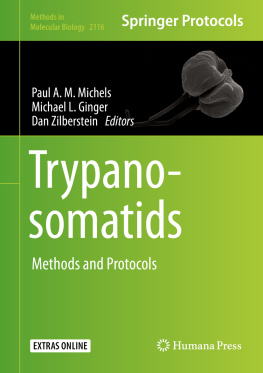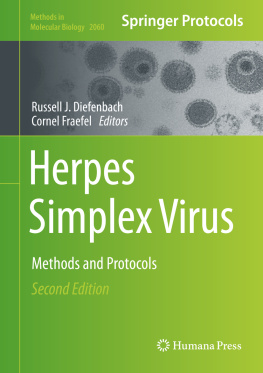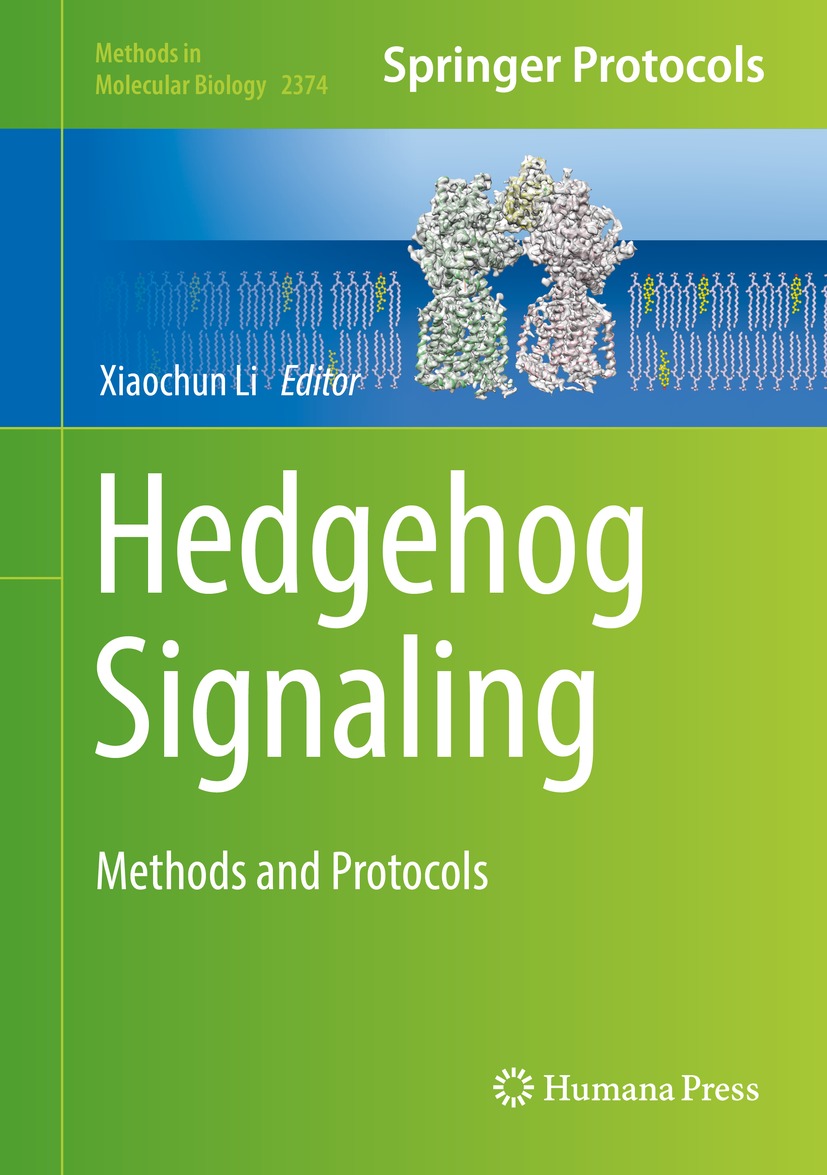Volume 2374
Methods in Molecular Biology
Series Editor
John M. Walker
School of Life and Medical Sciences, University of Hertfordshire, Hatfield, Hertfordshire, UK
For further volumes: http://www.springer.com/series/7651
For over 35 years, biological scientists have come to rely on the research protocols and methodologies in the critically acclaimed Methods in Molecular Biology series. The series was the first to introduce the step-by-step protocols approach that has become the standard in all biomedical protocol publishing. Each protocol is provided in readily-reproducible step-by-step fashion, opening with an introductory overview, a list of the materials and reagents needed to complete the experiment, and followed by a detailed procedure that is supported with a helpful notes section offering tips and tricks of the trade as well as troubleshooting advice. These hallmark features were introduced by series editor Dr. John Walker and constitute the key ingredient in each and every volume of the Methods in Molecular Biology series. Tested and trusted, comprehensive and reliable, all protocols from the series are indexed in PubMed.
Hedgehog Signaling
Methods and Protocols
1st ed. 2022

Logo of the publisher
Editor
Xiaochun Li
Department of Molecular Genetics and Biophysics, University of Texas Southwestern Medical Center, Dallas, TX, USA
ISSN 1064-3745 e-ISSN 1940-6029
Methods in Molecular Biology
ISBN 978-1-0716-1700-7 e-ISBN 978-1-0716-1701-4
https://doi.org/10.1007/978-1-0716-1701-4
The Editor(s) (if applicable) and The Author(s), under exclusive license to Springer Science+Business Media, LLC, part of Springer Nature 2022
This work is subject to copyright. All rights are solely and exclusively licensed by the Publisher, whether the whole or part of the material is concerned, specifically the rights of translation, reprinting, reuse of illustrations, recitation, broadcasting, reproduction on microfilms or in any other physical way, and transmission or information storage and retrieval, electronic adaptation, computer software, or by similar or dissimilar methodology now known or hereafter developed.
The use of general descriptive names, registered names, trademarks, service marks, etc. in this publication does not imply, even in the absence of a specific statement, that such names are exempt from the relevant protective laws and regulations and therefore free for general use.
The publisher, the authors and the editors are safe to assume that the advice and information in this book are believed to be true and accurate at the date of publication. Neither the publisher nor the authors or the editors give a warranty, expressed or implied, with respect to the material contained herein or for any errors or omissions that may have been made. The publisher remains neutral with regard to jurisdictional claims in published maps and institutional affiliations.
Cover Illustration Caption: A cryo-EM structure reveals that two Patched receptors engage two distinct sites on one Sonic Hedgehog ligand yielding a signaling-competent complex.
This Humana imprint is published by the registered company Springer Science+Business Media, LLC part of Springer Nature.
The registered company address is: 1 New York Plaza, New York, NY 10004, U.S.A.
Preface
Hedgehog (HH) signaling has been studied for 40 years. With the dedication of many scientists in the field, it has been shown to play an important role during embryonic development and adult tissue homeostasis in species ranging from insects to mammals. Importantly, aberrant activation of HH signaling has been implicated in various cancers, including basal cell carcinoma, medulloblastoma, and leukemia. Vismodegib, which was developed by Genentech to target the HH pathway, had been approved by U.S. Food and Drug Administration for the treatment of basal cell carcinoma. Therefore, further studies of the HH signal pathway will significantly accelerate our understanding of the molecular mechanisms of animal development and provide additional insights into the treatment of HH-signal linked diseases, particularly cancers.
There are several key protein components in this pathway, including HH, the signaling ligand; Dispatched, a HH secretion regulator; Patched, the receptor of HH; Smoothened, the signal transducer used to transduce the HH signal across the plasma membrane; and GLI, the transcription factor to turn on HH target genes. Recent technical breakthroughs with biophysical and cell biological approaches considerably advanced our understanding of the molecular mechanism underlying the generation and transduction of HH signal, indicating the important role of sterols in this pathway. In this book, the methods of recent interesting studies are described. I wish to express my deep appreciation to all the contributors for their time and efforts to share their expertise and experience.
During development, HH morphogen gradients ensure reproducible and accurate pattern formation. In this book, Roelink and his colleagues describe how to employ genetically modified murine stem cell lines to study morphogen gradients. The full-length HH protein can be cleaved by itself prior to its maturation. In 1996, the Philip Beachy group discovered that the C-terminus of HH catalyzes the autocleavage reaction to covalently add a cholesterol on the carboxyl terminal end of the N-terminus of HH (HH-N). Later studies showed that this modification is essential for proper HH dispersal. After cholesterol modification, a palmitate moiety can be added to the amino terminus of HH-N by Hedgehog Acyltransferase (HHAT). The palmitoylation plays an indispensable role in signal transduction since mutations in HHAT produce a phenotype similar to that of HH knockout in animals. Therefore, HHAT inhibitors potentially can be used to block HH signaling for treating several types of cancers. In this book, Andrei and his colleagues provide a method to monitor HHAT activity and inhibition. Song and his colleagues present a method to identify the cholesterol modification on Smoothened, another key component of HH signal pathway.
In 2003, the Kathryn Anderson laboratory at Sloan Kettering Institute discovered that vertebrate HH signal occurs at the primary cilium, a special organelle present in most vertebrate cells except red blood cells. The dependence on primary cilium makes HH signaling pathway unique among all signaling pathways. During the preparation of this book, Dr. Anderson passed away. Here, I would like to express my highest respect and admiration for her. Cho, Miyamoto, Mukhopadhyay, Rohatgi, Radhakrishnan, Zheng, and their colleagues present the methods to study how the key protein components of this pathway traffic in cilia and how the lipids on the cilia membrane regulate the HH signal.
Patched and Dispatched are structural homologs and responsible for releasing and receiving the HH ligands. In this book, Ogden, Qi, and their colleagues describe methods to analyze the cleavage of Dispatched for HH secretion and assemble the protein complex of Patched1-Hedgehog. Smoothened, a class-F GPCR, plays a role as a signal regulator to transduce the HH signal from the extracellular space to the cytosol. The regulation and modification of the Smoothened protein have been shown to play important role in HH signal transduction. Jia, Jiang, Manglik, Myers, Ikeuchi, Schulte, Zhang, and their colleagues provide the methods to detect the modification of Smoothened and analyze its activity by small molecule or nanobody and assemble the complex of Smoothened with the heterotrimeric Gi protein. Jiang and his colleagues provide an approach to study the phosphorylation of GLI, which contributes to GLI activation. Finally, Kim and his colleagues present a method to study HH-related lung cancer by an orthotopic mouse model.

